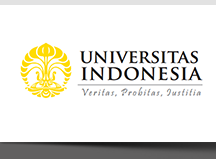Abstract
Background: About 10-15% of medical examinations of workers at upstream oil and gas companies are not conducted properly. In some cases, workers die at worksites. Many doctors carrying out the assessment lack the competency to assess occupational risks. In this study, we developed a scoring system for ‘fitness for work’ assessment, which can be used by trained doctors.
Methods: Diagnostic testing was done with comparing the results of the determination screening fitness for work using a scoring system with the determine fitness for work results by Occupational Medicine Specialist as a gold standard in the same group. The entire 607 samples used in this study. The development of the scoring system for ‘fitness for work’ assessment used the Delphi method. This scoring system consists of three variables, i.e. health status, occupational risks, and referral time. ’Fitness for work’ status were determined by summing up the score from each variable and then compared with the gold standard. The outcome of this study are the sensitivity, specificity, positive predictive value, and negative predictive value of the scoring system.
Results: The scoring system conducted by general practitioners in this study showed high sensitivity (98.8%), positive predictive value (99%), and specificity (79%).
Conclusion: A scoring system based on health condition, occupational risks, and referral time can be used by doctors working in upstream oil and gas companies to assess ‘fitness for work’ of their offshore or remote onshore employees.
References
- Palmer KT, Brown I, Hobson J. Fitness for work: the medical aspects. 5th ed. Oxford: Oxford University Press; 2013. https://doi.org/10.1093/med/9780199643240.001.0001
- International Association of Oil & Gas Producers (OGP). Managing health for field operations in oil and gas activities. OGP Report No. 343. London: OGP; 2011.
- Ljungquist T, Arrelöv B, Lindholm C, et al. Physicians who experience sickness certification as a work environmental problem: where do they work and what specific problems do they have? A nationwide survey in Sweden. BMJ Open 2012;2:e000704. https://doi.org/10.1136/bmjopen-2011-000704
- Lindholm C, Arrelöv B, Nilsson G. et al. Sickness-certification practice in different clinical settings; a survey of all physicians in a country. BMC Public Health. 2010;10:752. https://doi.org/10.1186/1471-2458-10-752
- Maizlish N. Workplace health surveillance: an action-oriented approach. New York: Oxford University Press; 2000. https://doi.org/10.1093/oso/9780195128888.001.0001
- Talmage J, Melhorn J, Hyman M. AMA guides to the evaluation of work ability and return to work. Chicago: American Medical Association Press; 2011. https://doi.org/10.1001/amaguidesnewsletters.2011.JulAug02
- Kamal K. Laporan tahunan SKK Migas ‘Laporan Bidang KesehatanTahun 2014 - 2016’. 2016.
- Oil and Gas UK. Medical aspects of fitness for work offshore: guidance for examining physicians. Issue 6. Aberdeen: Oil and Gas UK; 2008.
- Nieuwenhuijsen MJ, editor. Exposure assessment in occupational and environmental epidemiology. Oxford: Oxford University Press; 2003. https://doi.org/10.1093/acprof:oso/9780198528616.001.0001
- Sastroasmoro S, Ismael S. Dasar-dasar metodologi penelitian klinis. Jakarta: Sagung Seto; 2011.
- Skulmoski GJ, Hartman FT, Krahn J. The Delphi Method for Graduate Research. Journal of Information Technology Education. 2007; 6:1-5. https://doi.org/10.28945/199
Recommended Citation
Kamal, Kasyunnil
(2025)
"Scoring System for Screening Fitness to Work for Offshore and Onshore Remote Area Worker,"
Occupational and Environmental Medicine Journal of Indonesia: Vol. 3:
No.
1, Article 3.
DOI: 10.7454/oemji.v3i1.1083
Available at:
https://scholarhub.ui.ac.id/oemji/vol3/iss1/3
Included in
Community Health and Preventive Medicine Commons, Occupational Health and Industrial Hygiene Commons, Public Health Education and Promotion Commons

